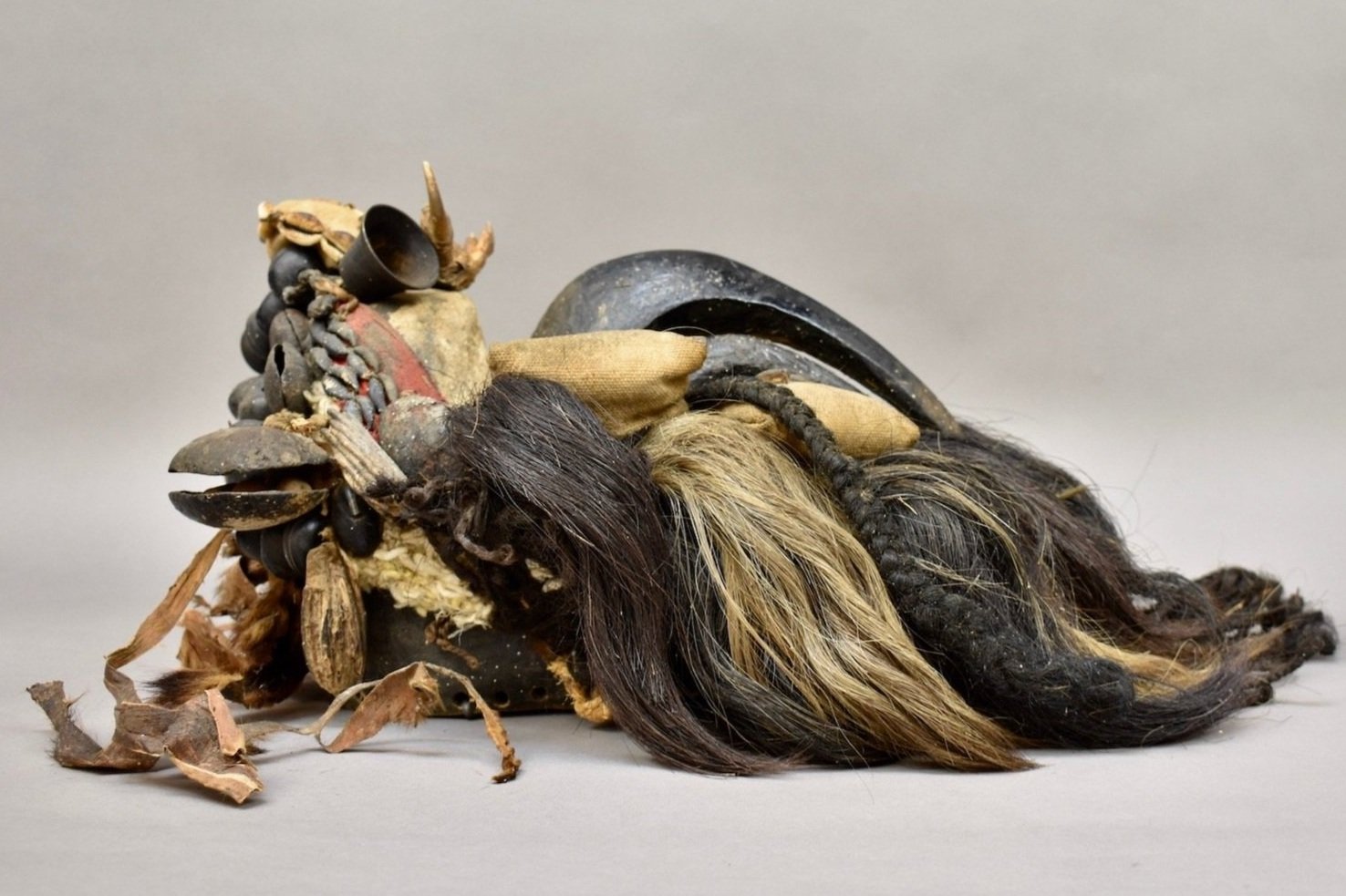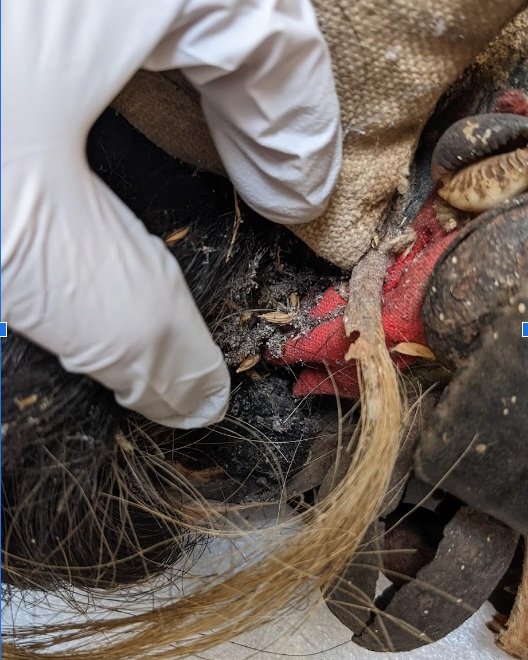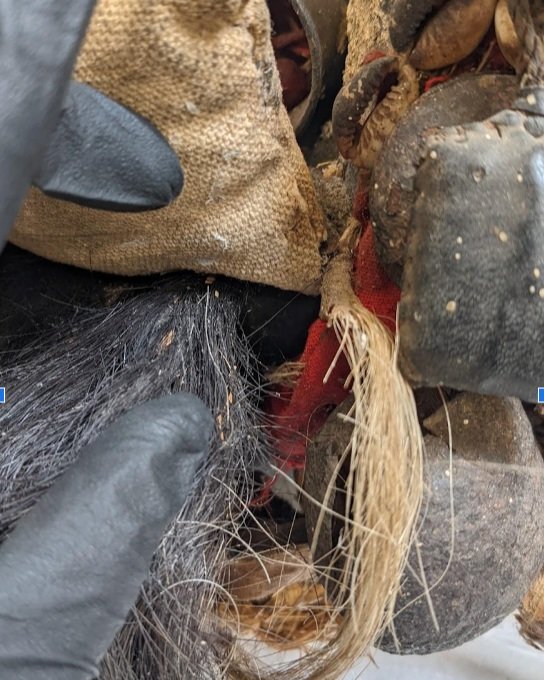Anoxia Pest Control Treatment of an African Mask
Object Department:
Anoxia Pest Treatment
Unknown, Wee (Wè), Dan or Wobe peoples, Côte D'Ivoire or Liberia, Face Mask, Organic materials including wood, chicken’s feet, bells, amulets, cowrie shells, red trade cloth, leopard skin, animal hair, and encrusted patina
Early 2022, we launched a stand alone Pest Facility with a dedicated bubble chamber. In this Facility, anoxic (without oxygen) conditions are used to treat insect-infested objects. The procedures employed are safe for both people and collections. This makes anoxia an attractive alternative to toxic fumigants. However, the oxygen levels needed to kill insects are so low that an anoxic environments need to be carefully monitored to be effective and to ensure the safety of objects and sensitive materials.
This mask was brought to the Pest Facility with the hope that it could be later lent to a Museum exhibition in Illinois. The Mask is made up of an array of organic materials with extensive organic debris due to the previous pest infestation, including insect casings and frass. The mask is attributed to Wee (Wè), Dan, Bassa, Guere or Wobe from Cote d’Ivoire or Liberia. According to the National Museum of African Art History and Culture, these masks are used to “perform in a variety of contexts, including the settlement of disputes, communication of moral messages and warfare”. This face mask exemplifies the use and juxtaposition of both local and imported materials, including imported metal bells and shell crotales.
After anoxia treatment the mask was gently cleaned and stabilized including mechanically removing insect frass and casings from around the fragile leopard hide at the top of the head and sections of fur were cleaned and reattached to the hide.
Please contact Preservation Arts for any conservation projects you may be considering. Call 510-808-7894 or email info@preservation-arts.com.




